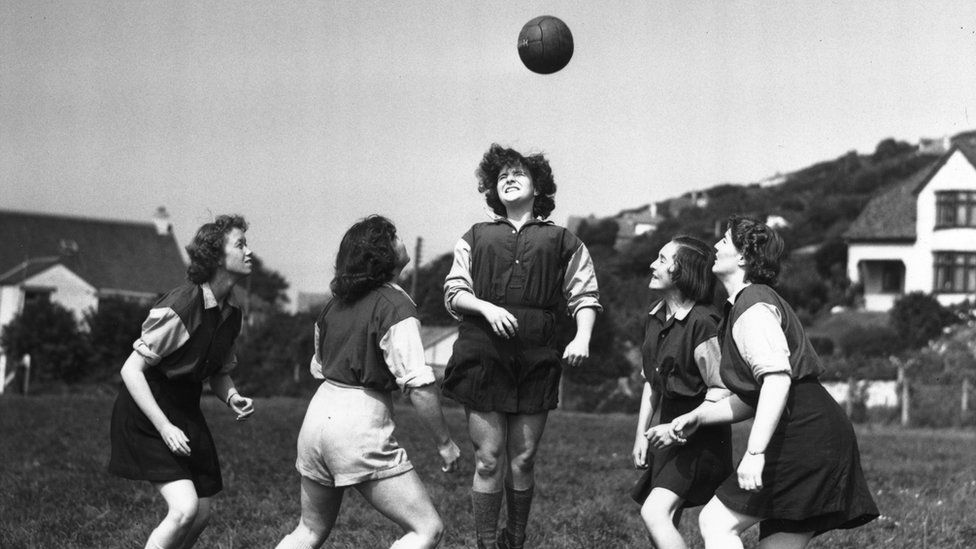Women’s soccer likely first came to the attention of the casual observer when a shirtless Brandi Chastain celebrated the winning goal of World Cup 1999 in front of a roaring crowd of over 90,000. But a century before Mia Hamm and Bend It Like Beckham, women were proving the Beautiful Game is not always a man’s game.

As historian Jean Williams documents in her 2003 study, A Game for Rough Girls?, females participated in the many variations of “folk football” found in cultures spanning the globe for centuries; but the first recorded football match featuring women took place in Scotland in 1888, at the very dawn of the game as a regulated sport.
By the 1890s, organised ladies’ teams from all over Britain were competing in the newly codified Association Football. The women’s game was thus poised for an explosion of popularity with the onset of World War I, during which the insatiable football passion of the nation discovered and embraced the novel spectacle of newly-formed female sides like the legendary Dick, Kerr Ladies.
Dick Kerr Ladies
Sporting superstars of their day, the Dick, Kerr Ladies were an exceptionally talented team organised and supported by the Lancashire munitions factory Dick, Kerr. The works-based team is a common provenance of the late nineteenth and early twentieth centuries, shared by such iconic men’s clubs as Arsenal (formed by workers of the Royal Woolwich Arsenal); and this accounted for massive growth in women’s teams as female workers flooded the factories to replace drafted men and fulfil wartime demand.
Dick, Kerr Ladies (who eventually evolved into Preston Ladies, surviving and thriving for decades even after the Football Association’s attempts to eliminate women’s football) proved the most successful of many such work-based football clubs for women. The team, featuring legendary goalscorer Lily Parr, raised prodigious sums for charity by drawing spectators in the tens of thousands, most notably the capacity crowd of 53,000 who attended a Boxing Day match at Goodison Park in 1920.
“They were massive stars by then,” The Dick, Kerr’s Ladies author Barbara Jacobs told Chris Hunt for his August 2005 Four Four Two article “Belles of the Ball”. “Not only were they brilliant footballers, but they were doing a week’s work and then turning out to play football in their spare time – and they were giving all the money they earned to wounded and invalid soldiers.”
So accomplished and celebrated were Dick, Kerr Ladies that they became the de facto England national side, touring France and the United States, where in the absence of any women’s soccer they competed against experienced men’s sides.
Ray of the Rovers
Thanks largely to Dick, Kerr Ladies, the appeal of women’s football was so widespread by the early 1920s that it even produced its own gallant fictional heroines in the style of the enormously popular Boys Own Stories.
In Those Feet: An Intimate History of English Football, author David Winner notes the appearance of “proto-feminist football stories,” most strikingly Ray of the Rovers, a 1922 novelette whose eponymous heroine displays all the prototypical pluck, courage and commitment so intrinsically bound with England’s sense of footballing prowess to this day.
Women’s Football Banned
It has been speculated, perhaps too glibly, that the Goodison Park crowd drawn by Dick, Kerr Ladies may have represented a fateful tipping point: the culmination of a perceived threat to the men’s footballing establishment, leading the Football Association to ban women from playing on FA-affiliated pitches, in effect relegating the women’s game to the fringes of sporting society.
It would be fifty years before the game’s premier governing body embraced women’s football, lifting the ban and establishing the FA Women’s Cup in the 1970/71 season, and ushering in a new wave of women’s football.























